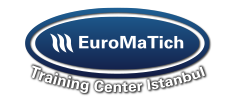Overview:
Introduction:
Sustained public relations campaigns can help drive strategic organizational change, build public perceptions, and drive reputation with key stakeholders. Well planned and executed campaigns are a cost-effective means of changing perceptions and increasing stakeholder value for an organization.
This powerful program takes a problem-solving approach to the design of PR campaigns. By closely fitting the campaign to core business priorities as well as project objectives campaign design reinforces key messages and organizational strategy. Participants will develop the skills to design, plan, cost, deliver, and evaluate campaigns using the full range of PR media and channels. Case study examples in print and video will be used throughout. Action planning for the workplace to put ideas into action is a strong feature of the program.
Course Objectives:
At the end of this course the participants will be able to:
- Examine the range of PR campaigns and the purposes that they can achieve
- Develop a problem-solving approach to match the PR campaign strategy to business objectives
- Plan PR campaigns to meet the need for setting clear objectives with behavioral outcomes and measurable results
- Examine a wide range of successful campaigns to judge the different strategies and use of channels and media
- Measure risk presented during a campaign by increased public and media scrutiny and to plan to mitigate these risks
- Learn how to evaluate PR campaigns to demonstrate success to the business and to develop campaign methodology
Targeted Audience:
Team leaders, managers, business partners, and line managers who are held accountable for the performance of the organization and its employees.
Course Outlines:
Unit 1: Effective PR Campaigns:
- Welcome and introduction
- Perceptions of PR among senior managers
- The global information village
- Putting a cash value on reputation and the PR that builds it
- PR campaigns – their use and their risks
- Case study examples – what works and what does not
- Practical example – tackling a business challenge
- An introduction to evaluation
Unit 2: A Problem-Solving Approach to Campaigns:
- Brand, identity and image, the basis of reputation
- Assessing your reputation and the use of ‘gap’ analysis
- The origins of PR and its foundations in the social sciences
- Business strategy and problem identification
- Problem-solving methods – choosing the right one
- Problem analysis – desk research, stakeholder analysis, PEST, and SWOT
- Setting measurable objectives
- Force field analysis and risk identification
Unit 3: Planning and Costing Campaigns:
- Identifying the stages of the campaign and decision points
- Preparing an effective schedule – critical path analysis
- Critical path analysis
- Costing the plan and preparing a budget
- Anticipating risk and planning to meet it
- Practice case-studies
- Identifying stakeholders and their role in relation to the campaign
- Co-ordinating campaign elements across stakeholder groups
Unit 4: Channels, Delivery, and Evaluation:
- From strategy to tactics
- Environmental scanning
- Developing a media relations plan
- Crisis media relations
- Principles of evaluation
- Research tools and methods
- Channel effectiveness and use of media
- Social media and tools
- Using influencer strategies to multiply the effectiveness
Unit 5: Putting it all together – Effective Delivery in Your Organisation:
- A risk-management approach
- Dealing with contingencies
- Winning support – selling ideas to others in the business
- Presenting your case to senior management
- Reading body language and other signals
- Integrating your campaign into your own media and company reporting
- Ensuring that results are seen and credited
- Personal action planning


